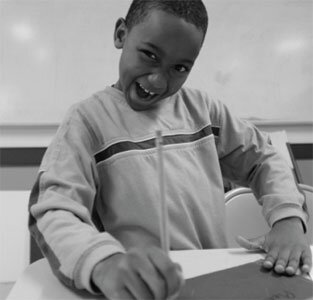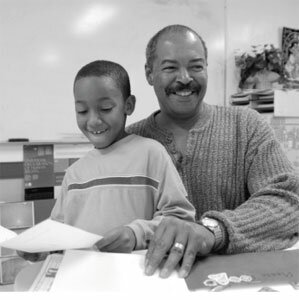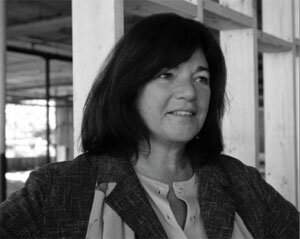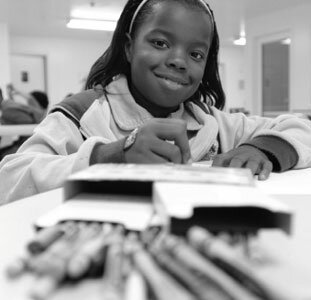School daze: Charter school stumped by regs

PHOTOS BY JEN FARIELLO
Educators Bobbi Snow and Sandy Richardson thought their proposal for a charter school stood a fighting chance. After all, it was designed for at-risk students at an at-risk age in an at-risk school division.
And since the federal government thought enough of their proposal to hand over $450,000, they figured the Charlottesville school board would smile on it, too. Instead, the city school system has spent nearly a year pointing out what's wrong with their plan.
Could a new public charter school for the system's most vulnerable students be an answer– or one more problem for a troubled district?
***
"My own belief is that middle school is a crucial time," says Snow, who has 25 years of education experience, 13 years in classrooms. "Every intervention has a cost, and the question becomes, 'Do you want to invest in them now, while they're little?'"
Their proposed solution, the Community Public Charter School, could open its doors next fall to about 60 at-risk students in grades five through eight– if Board members approve their application. As they're finding, that's a very big "if."
After first submitting their proposal in February, Snow and Richardson were shocked that an idea that beat out applications from all over the country to win nearly a half a million dollars from the federal Department of Education's Department of Innovation would find so little favor in Charlottesville.
Citing a lack of "valuable ideas," a review team, composed mainly of district administrators, recommended that the Charlottesville School Board deny their application.
"It was if they were reading a completely different document," says a still-incredulous Snow. "We had to look at the proposal and say, 'Did we send the wrong proposal?"
After the April meeting with city school administrators, the applicants went back to work. They studied the committee's concerns, revised the draft, and have now resubmitted their proposal.
In the next step, according to assistant superintendent Gertrude Ivory, a committee will review the plan and "make a recommendation to the Superintendent, who will continue the process and make a recommendation to the school board."
Snow is frustrated by the Board's refusal to speak with she and Richardson. The Board claims this is because the Virginia School Boards Association, as well as their lawyer, advised them not to talk to applicants while the review team is considering the proposal. Thus the Board's knowledge of the project is limited to a summary accompanying the review team's recommendation for denial last spring.
Win or lose, the applicants have invested more than a year, thousands of dollars, and high hopes. If they were in a charter-friendly state like Arizona, with its 491 charter schools, the waiting period might be eased by greater confidence in the outcome.
But this is Virginia, with just three charter schools in the entire state, and where the odds of adding another may be stymied by state law.
***
Part of an education reform trend, charters are public schools that develop their own teaching models and can operate independent of standard school system oversight.
Whether such schools are a creative choice or a failing experiment, a positive force for reform, or a stealth attempt at privatization depends on who you ask– and what state you're in.
When Virginia governor Jim Gilmore passed charter school legislation in 1998, opponents compared supporters to abortion clinic bombers. Others saw school choice as a long overdue step forward.
Now there are as many kinds of charter schools as there are laws to help or hinder them. Such schools can be parent-initiated or business-oriented, arts-centric or tech-centric.
While over 40 states have passed legislation enabling the existence of approximately 3,400 charter schools nationwide, the laws that guide them are highly inconsistent among states, according to the Center for Education Reform.
"Historically, Virginia has had a tough time passing a meaningful charter school bill," says Kirk Schroder, former president of the Virginia Board of Education, who recalls the days when the Clinton administration was handing out money to states with charter school initiatives. "The money was relatively easy to get, but Virginia's law was so weak that the federal government turned the state down," he says.
One thing that favors the proposed school is that it targets struggling students. Virginia law directs school boards to give priority to projects that focus on "at risk" students, especially those "currently served by schools that have not achieved full accreditation" under the federal No Child Left Behind law.
Buford Middle School, a potential feeder school, is not fully accredited under No Child, and Walker Upper Elementary– while fully accredited– has not yet met its "Annual Yearly Progress" under No Child.
Snow and Richardson believe state law may be stacked against them.
What Snow considers the biggest difference is that in charter-friendly states, the panel that reviews proposals is independent of the district. Not in Virginia. The eight member committee reviewing their proposal includes five city school administrators.
"It's a little bit like a monopoly," says Snow, comparing it to asking Adelphia officials if they want Verizon in town.
Ivory denies any conflict of interest, pointing out that the review team includes a charter school principal. Ivory also explains that the applicants were invited to have a representative "of their choosing" on the review committee."
One reason districts might not look fondly upon new charter schools is that they claim a share of the district's already limited financial resources. In this case, operating costs– even though partly offset by grants– might amount to $1 million for the first year and $1.2 million when the school reaches full capacity of 120 students.
"Budgetary priorities would be negatively impacted," the review team stated in the April assessment. On the other hand, the reviewers noted it might be "expensive at first, but an investment that could save in the long run."
A quieter issue might be that a charter school, while part of the district, plays by its own rules. Many believe that by its very existence, a charter school raises questions about the effectiveness of the conventional system.
"The fight over charter schools has centered on the loss of local control and autonomy," says Schroder. "It's clear that charter schools can be seen as a threat to the local district."
Indeed, in an official Charlottesville School Board document posted on its website after a September 8 focus group meeting, charter schools are listed– along with drop-outs and white-flight– as one of the "threats" to the city system.
The review committee acknowledge that the new school "would have to work very differently" from the current system. Snow and Richardson don't argue with that. Snow was the middle school director at private and artsy Tandem Friends School when she and Richardson, the dean of students there, first discussed starting an affordable "arts-infused" school.
Snow grew more passionate about the idea while working in a Washington, D.C. charter school serving mostly poor and minority students. She thought the concept would work in Charlottesville. Mindful of the city's high poverty statistics and large numbers of students in need of remedial education, they turned their enthusiasm to creating a public charter school.
In the pages of their proposal, the educators describe a middle school program that relies on the arts to teach content, the sort of tutorial-driven environment parents dream of for precocious pre-adolescents. It would enroll a racially integrated mix in partnership with Computers4Kids and the University of Virginia Art Museum.
This ability to resemble a private academy while remaining a tuition-free public entity is one reason for charter schools' popularity, often necessitating a lottery to pare down the sometimes-overwhelming applicant pool.
The blurring of the lines also makes districts uneasy, Snow says: "They saw us as inside the school system; we saw it as alongside."
In fact, one of the review team's criticisms of the proposal was that it "does not offer anything better or different than what we offer or have capacity to offer."
Snow defended the approach of the Community Public Charter School at the April meeting by asking the committee to specify "which existing programs offer the same method and intensity of student guidance."
She never got an answer.
***
Albemarle County is currently home to one of the state's three public charter schools. Founded in 1988 and given charter status in 2001, Murray High School is also geared to "at-risk" students and others who might "graduate below potential." But while Murray's project-based curriculum veers somewhat from the traditional model (grades dip no lower than a B), its curriculum is based on SOLs, unlike the proposed charter.
Snow likens Murray to Tandem, in that it attracts high school students who will benefit from customized instruction and who have yet to truly tank academically.
"Ours is more remedial," says Snow. "We're trying to attract kids who are already defeated and who may not otherwise make it through high school."
The proposed city school would build an arts-heavy curriculum to fit the learning needs of the city's most vulnerable students. Many kids thrive in such a visual, high-interest learning environment, Snow believes, having seen the evidence while working at Tandem.
Schroder agrees with that idea, saying "the arts have a tremendous value in education. Introduction of the arts supports academic achievement."
In addition, parents– whose involvement is widely considered a key to academic success– would make up 50 percent of the management team.
School board member Julie Gronlund stresses that the remedial aspect of Snow and Richardson's proposal will receive close attention.
"Helping those kids who are under-performing in our schools is a top priority for this division, so any proposal that addresses this issue is of serious interest," she says.
When it receives the superintendent's recommendation, Gronlund says, the Board will study the proposal and "move forward in the manner that best supports the children whose needs are being addressed."
***
Valerie Johnson is one parent who thinks a smaller school could have made a difference for her children who "got lost" at Buford.
In a letter to the review team, Johnson's son, now 20 years old and eager to attend college, wrote, "I went to the Charlottesville schools all my life. In both Walker and Buford I had terrible experiences. I was unprepared to be in high school, and it took 5 years to get my diploma. I did not get the help I needed and never felt like I could do the work. There were no tutors to help, and now that I want to go to PVCC I have to take classes to get me ready to do the work there. I am hoping the charter school will happen and help so many kids like me who need support from teachers and the school."
Charles Martin, the founder of Urban Vision, a successful after school program for disadvantaged Clark Elementary students, believes "many students" will benefit should the board approve the school.
"You try different things and find out what works," says Martin, whose Urban Vision program has led to kids scoring 30 percent higher on SOLs.
City schools parent Karl Ackerman, a former charter opponent, also supports the idea. The value, he believes, has to do with "scale." There's a stronger sense of community when teachers are working with classes of 12 versus 30 or more.
Where his own kids are concerned, Ackerman is satisfied with the city schools, which he praises for the newly introduced "morning meetings" that start the day with a dialogue between teacher and students. Nevertheless, for kids with impoverished backgrounds, he thinks there's a greater need within the district.
Ackerman says he was once suspicious of charter schools because for-profit businesses have entered the movement, and because some data has shown that charters "aren't making a difference."
In many cases, though, they are. Some individual models have "stunning statistics," Ackerman says, pointing to "90-90-90," a charter school model named for a student body that's 90 percent low income, 90 percent black, but which scores in at least the 90th percentile on state exams.
Snow says the Community Public Charter School won't be a segregated model, but it will serve poor children who face greater hurdles on standardized exams. Instruction won't revolve around tests mandated by the federal No Child Left Behind Act, however.
"Promotion, retention, and graduation" would not hinge on state exams, the applicants told the committee in April.
How then would they address No Child? committee member Kyle Kopas asked.
Richardson agreed to create a more detailed plan, but argued that, overall, they'd addressed every No Child requirement from "accountability for student performance" to "reduced bureaucracy and increased flexibility."
Another hitch for the committee was the school's unconfirmed location. While Snow and Richardson have set their sights on the burgeoning Frank Ix complex just south of the Downtown Mall, after spending thousands of dollars of their own money, Snow says they can't afford to sign a lease for one year forward without approval of the application.
Even the $450,000 federal start-up grant awarded to the proposed school has presented obstacles. In order to land the award, the applicants had to obtain non-profit status, which the School Board won't allow because it makes the group a separate organization, outside the district's budget.
Ivory says the grant's disbursement "would have to be negotiated in accordance with state law and local policy."
In Virginia, local school boards have the last word on budget matters, too.
One of the most frustrating aspects of the process was summed up for both sides last spring when the committee stated that their approval would require a "leap of faith."
Snow's reply: "The proposed school, by definition, cannot provide certainty of outcomes before it exists, but it can offer a creative plan to give hope that it will serve at-risk students and families more effectively."
***
In their revised plan, Snow and Richardson say they have attempted to provide details about everything from personnel policies to test-taking and discipline strategies.
Over the past five years, two other charter school applicants have faced a battery of questions from a skeptical team of administrators. Both were turned down.
Why is it so hard to open a charter school in Charlottesville?
Ivory, who chaired the review committee, says all proposals are weighed "in accordance with state law and local policy," and "evaluated based on the merits." She adds that characterizing Charlottesville as unfriendly to innovation would be "unfair to the process and the professionalism of the review committees."
But should their revised application be denied, Snow and Richardson will find themselves at the end of that process, unable to rely on what many states offer: the ability to appeal the ruling to a higher body.
What's left, they say, is to look into ways to amend the Virginia law they believe stifles education reform. Charlottesville voters did some amending of their own on November 8, when– by a three-to-one margin– they passed a referendum to replace Charlottesville's appointed School Board with elected members. Snow and Richardson hope that spirit of change spills onto their proposal.
"The charter school movement," says Snow, "was meant to create incentives to try things that have never been tried before."

Sandy Richardson and Bobbi Snow hope to open their charter school next fall.

Clark Elementary School Student, Neil Wood

Charles martin, founder of Urban Vision, a Clark Elementary after school program, believes students will benefit from the new school.

Snow says the school won't be a segregated model, but will serve poor children who face greater exam hurdles

Clark Elementary School student, Heidia Stinnie